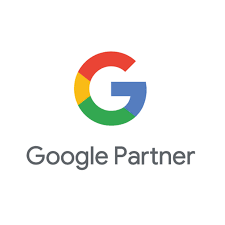
Done For You Google Ads Management.
Spend more on your best performing ads, less on everything else. Just follow our proven process:
1. Instant Audit: Connect your data to our dashboards. Get a high level account overview. Discover any tracking issues.
2. 30 Day Onboarding: We'll create your ads, adjust your audiences, and fix all tracking problems.
3. Ongoing Management: Each week we adjust your ads. Spending more on what works, less on everything else...

"Something's Off In My Account, But I Don't Know What..."
Google ads is designed to spend your money on your best performing ads.
However, this only works if your account is setup perfectly.
Make sure your account isn't setup to waste money!!!
Discover Your Best Performing
Messages
Audiences
Types of Ads
Products

30 Day Onboarding: Complete Account Makeover
Proper Google Ads set up is the #1 thing you can do to ensure good ad performance.
Setting up your account wrong is the #1 thing you can do to ensure bad performance.
Our team will leave no stone unturned to make sure you are setup for success.
Included in Onboarding
Data Collection Setup
Google ads is designed to spend your budget on your best performing ads. However, this only works if your conversion tracking is set up properly.
Our audits will often show that conversion tracking is not working right.
This is why the first priority with all new clients is to get all their systems ‘talking to each other’. Ensuring clients can connect every advertising dollar with every call, new lead, or online sale.
Keyword and Competitor Research
The better we understand your industry, the better your final ads will turn out. Our process of learning new industries relies heavily on competitor and keyword research.
Keyword research provides data on how much the market demands your services. It will also give us an idea of how much to pay for each click. (more competition = higher costs)
Competitor research will help us understand how your offer fits in the marketplace.
Account Creation or Reorganization
One of the most overlooked parts of Google ads is account organization. It’s tough to identify what's working well in a poorly organized account.
Click Targeter will structure your account like a science experiment. Limiting variables between ad groups. Crucial for proving your most compelling ads and keywords at the end of every campaign.
Ad Creation
Ad creation is our final step when inheriting a new account. Before writing your ads, it's important we completely understand your business.
The best ads go through a few drafts. The more client's provide input, the better the ad will turn out. (This is because no one knows your business better than you.)
Launch Initial Ads
Ads are only launched after client’s give the go ahead, and everything is set up behind the scenes.
This is where most agencies STOP working. This is where Click Targeter really STARTS working.
From here the tricky part is figuring out exactly how much to pay for each of your clicks. A question that can only be answered with data provided by the market.

Ongoing Management: Let the Market Guide Your Decisions
What you think is going to work, and what actually works can be completely different.
Hire an expert to ensure your ad budget is spent on what actually works your business.
Ongoing Management Process & Common Questions
Weekly - Adjust Bids and Refine Keywords
Your bid is how much you’re willing to pay for one click. Figuring out an ideal bid is an ever changing process. This is why we adjust bids weekly based on performance. After enough small changes we’ll settle on the right price range for your company.
Your keywords determine the searches on which your ad appears. Ads will inevitably appear on some searches that have nothing to do with your business. While this is never a good feeling, recognizing bad searches is a crucial part of improving keywords. (Negative keywords are then used to prevent ads appearing on bad searches.)
Monthly - Strategy Video Meetings
What went well? What went bad? And knowing what we know now, what do we change moving forward?
These are the three main questions that guide all Click Targeter strategy meetings. Together we’ll review your account performance, and make changes based on your feedback.
Clients will leave each meeting with a better understanding of their advertising performance. Click Targeter will leave with a better understanding of where to spend client’s ad budgets.
Quarterly - Update Messaging
Once ads are live, we try to make as few changes as possible. This helps limit variables, crucial for truly understanding your best messages and keywords.
However, in the world of online advertising nothing stays the same. So each quarter we’ll adjust your messages. Ensuring that ads are aligned with any changes in your business.
(Of course messages can be tweaked along the way)
Do I Own My Google Ads Account?
Yes! At the end of your relationship with Click Targeter you will have full ownership of your account.
Meaning you can advertise directly with Google ads, without a manager.
How Long Does This Process Take?
Click Targeter requires a three month commitment. This includes the initial 30-day onboarding, and two months of ongoing management.
Click Targeter’s main goal is to align your ad spend with your best performing ads. This takes time, and can only be done by testing your messages in the marketplace.
Will You Work With My Competition?
No. During our relationship, Click Targeter will not work with any of your competition. By working with direct competition, it raises the cost of clicks for all the best keywords. Making the ads less profitable for everyone involved.
This is why the price is more expensive for national accounts.
How Much Of Your Google Ads Budget is Going To Waste?
Schedule a discovery call to find out...



